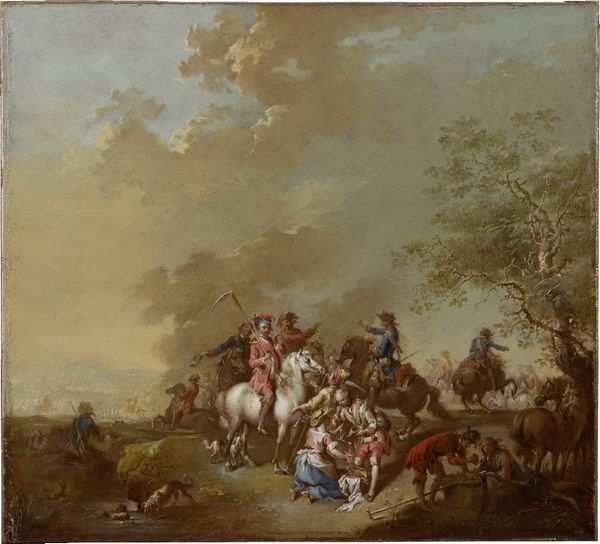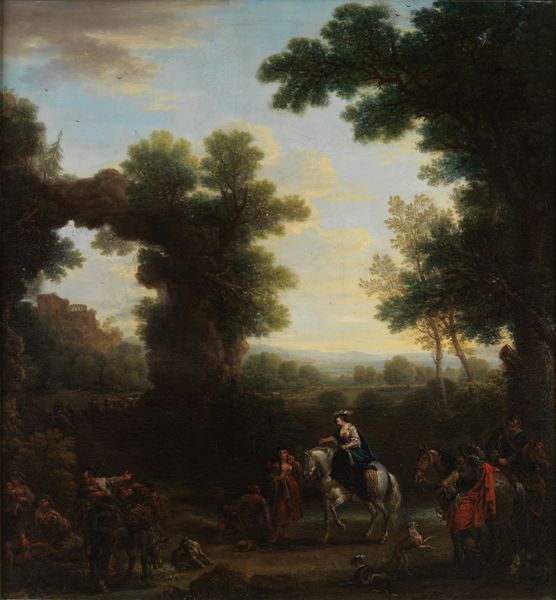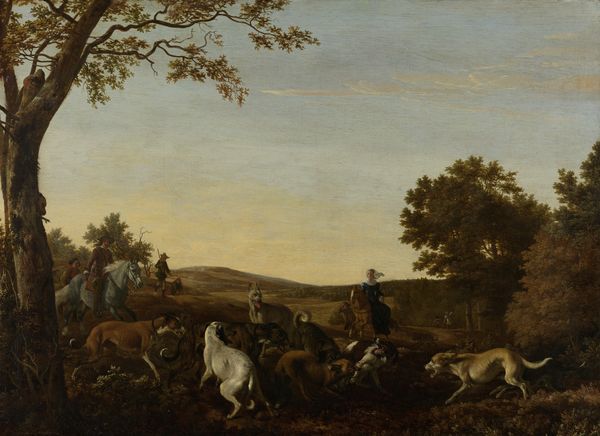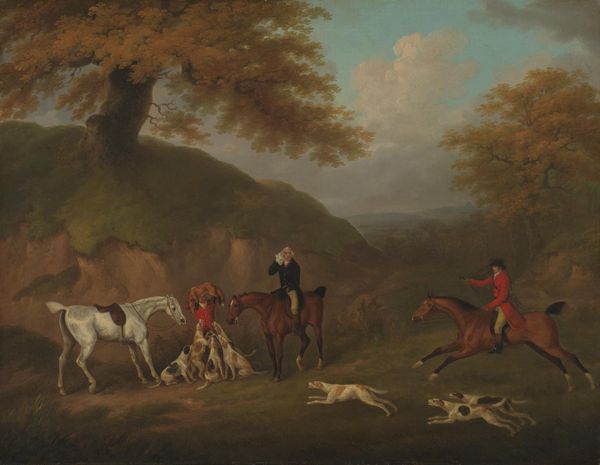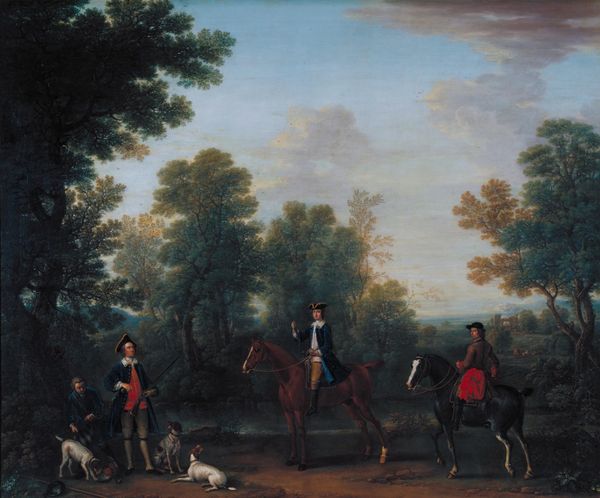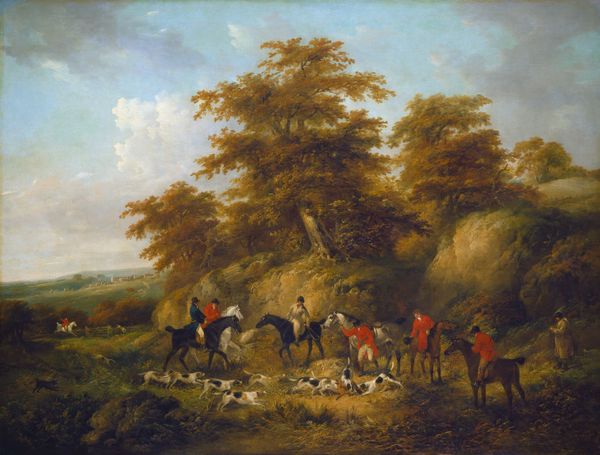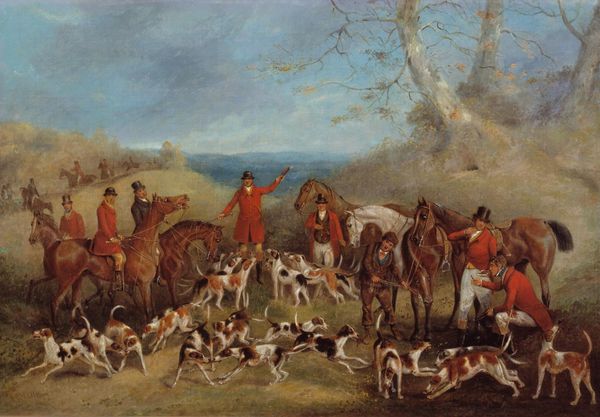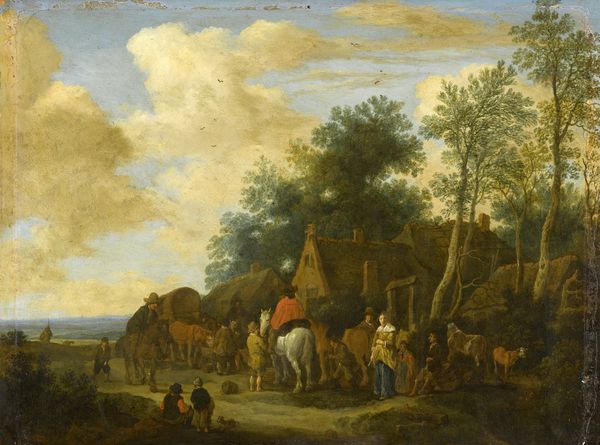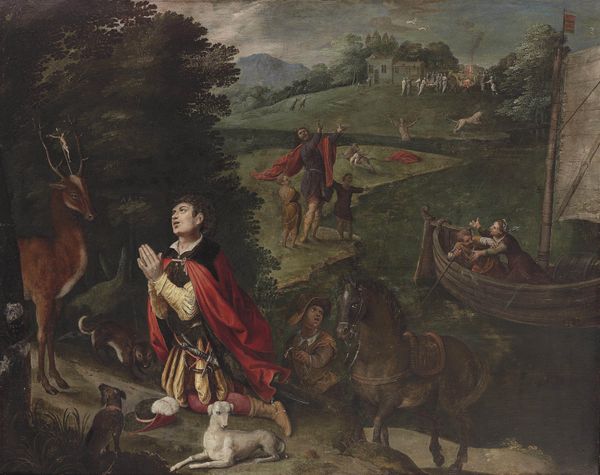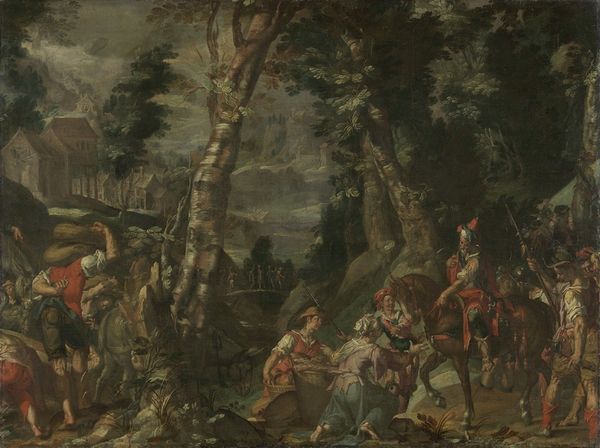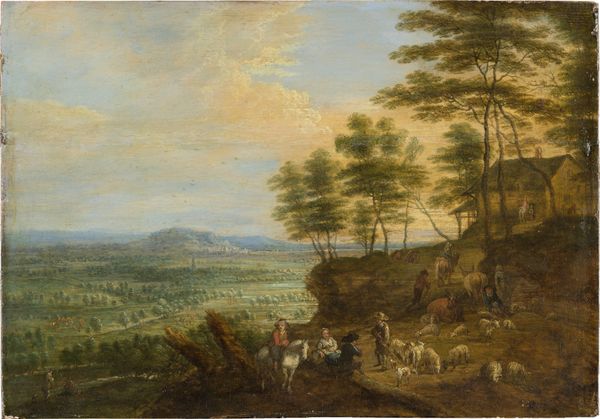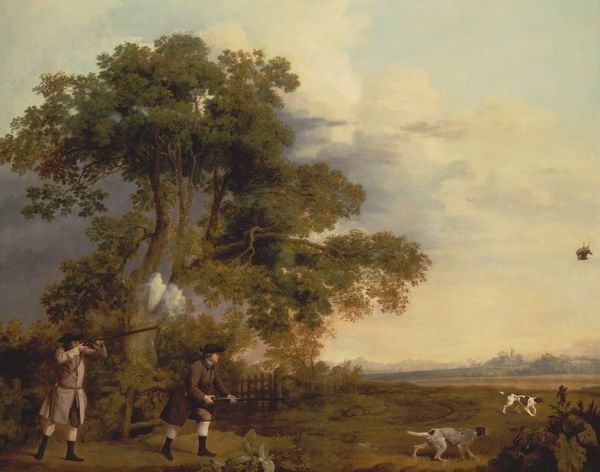
painting, oil-paint
#
gouache
#
painting
#
oil-paint
#
landscape
#
oil painting
#
genre-painting
#
rococo
Dimensions: overall: 61.5 x 74.8 cm (24 3/16 x 29 7/16 in.) framed: 84 x 98 x 8.9 cm (33 1/16 x 38 9/16 x 3 1/2 in.)
Copyright: National Gallery of Art: CC0 1.0
Editor: Here we have Nicolas Lancret's "Picnic after the Hunt," created around 1735 to 1740 using oil paint. It strikes me as such an idealized, almost staged depiction of leisure. What do you see in this piece, particularly in its historical context? Curator: Indeed, Lancret offers us a glimpse into the aristocratic culture of 18th-century France, but through a very particular lens. Note how the figures are positioned; not just resting but *performing* leisure. They're enacting a pastoral fantasy deeply tied to notions of nobility and land ownership. How do you think the actual practice of hunting would compare to this representation? Editor: I imagine the reality was much less…tidy! The figures are so clean, and the scene is so harmonious. Almost like theatre. Was Lancret deliberately glossing over the messier aspects of aristocratic life? Curator: Precisely! Think about who commissioned and consumed these paintings. They reinforced a particular social order. It’s crucial to consider the role these images played in justifying the privileges of the ruling class. Landscape, figure, costume-- everything becomes part of a political statement, subtle yet potent. The composition reinforces hierarchies, even in apparent relaxation. Editor: So, while seemingly lighthearted, the painting carries weight as a reflection and reinforcement of social structures? Curator: Exactly. Consider the subtle power dynamics inherent in depicting leisure in such a mannered way. Lancret's "Picnic" isn't just a pretty picture; it's a window into the complex interplay between art, power, and representation in 18th-century France. Editor: That really reframes how I see the painting. It’s more than just an idyllic scene; it’s a carefully constructed image serving a social function. Curator: Right. And appreciating that unlocks new depths within the artwork itself. It prompts us to ask who gets represented, and how, and why.
Comments
No comments
Be the first to comment and join the conversation on the ultimate creative platform.
